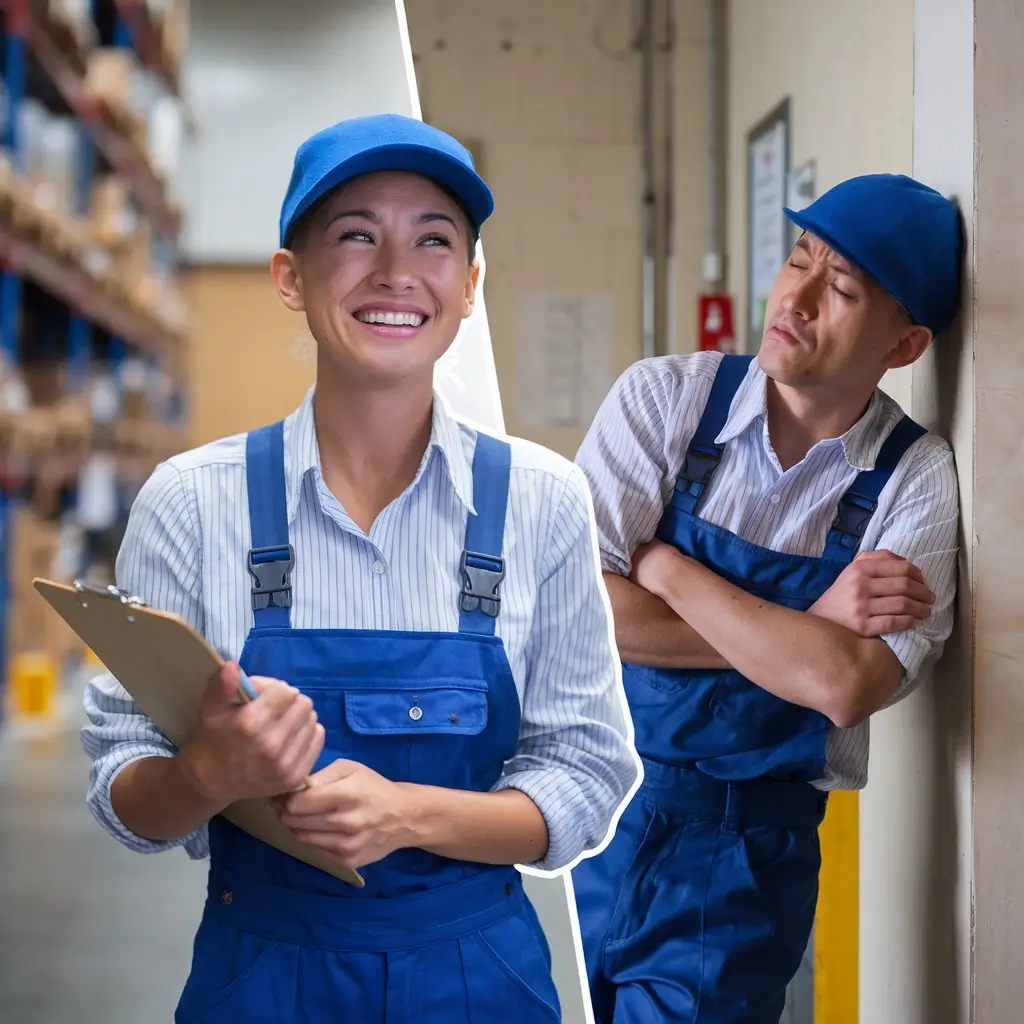In a world that never stops moving, finding the sweet spot between your career and personal life can seem like chasing a mirage. Juggling work deadlines with family time, self-care, and hobbies often leaves many feeling stretched thin and pulled in every direction. But what if achieving that elusive harmony was more attainable than you think? In this article, we’ll dive into the importance of work-life balance and share actionable tips to help you reclaim your time and create a fulfilling life that celebrates both your professional ambitions and personal passions. Get ready to transform your approach and discover the balance you’ve been seeking!
Understanding Work-Life Balance
Definition of Work-Life Balance
Work-life balance is a concept that refers to the equilibrium between an individual’s professional responsibilities and personal life. It involves managing time and energy effectively to ensure that neither work nor personal commitments are neglected. Achieving this balance means dedicating enough time to career pursuits while also nurturing relationships, engaging in hobbies, and allowing for personal growth. Importantly, work-life balance is not about equal time distribution; rather, it’s about finding a sustainable rhythm that aligns with one’s values and priorities.
Significance of Balance for Mental and Physical Health
Maintaining a healthy work-life balance is crucial for both mental and physical well-being. When professionals become overwhelmed by work demands, they may experience heightened stress levels, anxiety, and burnout. Chronic stress can lead to serious health issues, including cardiovascular problems, weakened immune systems, and mental health disorders.
On the other hand, achieving balance leads to numerous benefits:
- Improved Mental Health: Individuals who prioritize personal time often report lower levels of stress and anxiety. Engaging in leisure activities and spending time with loved ones contributes to a sense of fulfillment and happiness.
- Enhanced Productivity: Paradoxically, taking breaks and ensuring time for personal interests can lead to increased productivity at work. A well-rested mind is more focused, creative, and efficient.
- Better Relationships: Dedicating time to family and friends strengthens connections and fosters a support system that can alleviate stress and improve overall life satisfaction.
Common Misconceptions about Work-Life Balance
Despite its significance, there are several misconceptions about work-life balance that can hinder individuals from achieving it:
- Work-Life Balance Means Equal Time: Many people mistakenly believe that achieving balance requires equal hours devoted to work and personal life. In reality, balance is subjective and varies greatly among individuals. It may involve spending more time on work during busy seasons and more time on personal pursuits during quieter periods.
- It’s a One-Time Achievement: Some view work-life balance as a fixed goal to be achieved. However, balance is dynamic and requires ongoing adjustments. Life circumstances, such as job changes, family needs, and personal goals, can shift, necessitating a reevaluation of priorities.
- Work-Life Balance is Only for Parents: While parents may face unique challenges in balancing work and family life, the pursuit of work-life balance is relevant to all individuals, regardless of their family situation. Young professionals, caregivers, and retirees can also benefit from finding harmony between their professional and personal lives.
- You Must Sacrifice One for the Other: Many believe that success in their career requires sacrificing personal time, or vice versa. Relaxation from daily routine allows people to achieve enhanced satisfaction and better success within both areas of life. Finding ways to integrate work and personal life, such as flexible work arrangements, can create a more harmonious existence.
The Role of Personal Values in Work-Life Balance
Understanding your personal values is foundational in achieving work-life balance. Your values dictate what is important to you, guiding your decisions and priorities. For example, if family is a core value, you may choose to prioritize family time over additional work commitments. Recognizing these values can help you make more informed choices about how to allocate your time and energy, ultimately leading to a more satisfying balance.
Assessing Your Current Situation
Reflecting on Personal and Professional Commitments
The first step in achieving work-life balance is to take a thorough inventory of your current commitments, both personal and professional. This reflection involves looking closely at how you spend your time and energy throughout the week.
- Creating a Time Log: Start by maintaining a time log for a week. Document your daily activities, noting how much time you spend on work tasks, commuting, family obligations, leisure activities, and self-care. This log will provide valuable insights into your time allocation and help you identify patterns in your behavior.
- Identifying Key Responsibilities: List all of your responsibilities in both spheres. For work, this might include project deadlines, meetings, and administrative tasks. In your personal life, consider family duties, social engagements, and personal interests. This comprehensive list will help you visualize the breadth of your commitments.
- Recognizing Your Energy Levels: Pay attention to your energy levels throughout the day. Are there times when you feel more productive at work, or do you notice energy dips that affect your personal life? Understanding your natural rhythms can help you allocate time more effectively, scheduling demanding tasks during peak energy periods and reserving downtime for relaxation or personal activities.
Identifying Areas of Imbalance
Once you have documented your commitments, the next step is to analyze the information to identify areas of imbalance.
- Evaluating Time Allocation: Look for discrepancies between how much time you allocate to work versus personal life. Are you spending excessive hours at the office while neglecting family time or personal interests? Are there activities that consume time without adding value or satisfaction to your life?
- Assessing Stress Levels: Reflect on your emotional and physical state. Are you feeling constantly stressed, anxious, or fatigued? High stress levels can be a significant indicator that you are out of balance. Consider which areas of your life contribute to these feelings and explore ways to mitigate stress.
- Seeking Feedback: Sometimes, it can be beneficial to seek feedback from trusted colleagues, friends, or family members. They may offer insights into your behavior that you might overlook. For example, they might notice that you frequently cancel plans or appear preoccupied during family gatherings, indicating an imbalance that needs addressing.
Setting Clear Priorities and Goals
After identifying areas of imbalance, it’s essential to establish clear priorities and goals to guide your efforts in achieving work-life balance.
- Defining Your Core Values: Consider what matters most to you in both your career and personal life. These values will serve as the foundation for your priorities. For instance, if family time is a priority, you may choose to limit work hours or decline additional responsibilities that encroach on that time.
- Setting SMART Goals: Create specific, measurable, achievable, relevant, and time-bound (SMART) goals related to your work-life balance. For example, you might set a goal to leave work by 5:30 PM three times a week or to dedicate Saturday mornings to family activities. These concrete goals will provide clear targets to work towards.
- Creating an Action Plan: Develop an action plan outlining the steps you will take to achieve your goals. This may include scheduling regular check-ins with yourself to assess progress, seeking new work arrangements, or committing to specific leisure activities. An action plan not only helps keep you accountable but also outlines a clear path forward.
- Being Flexible: While it’s important to set goals, also recognize that life is unpredictable. Preparedness exists to examine and reshape your main priorities alongside your objectives whenever required. Flexibility will allow you to respond effectively to changes in your personal or professional life that may impact your balance.

Tips for Achieving Work-Life Balance
Time Management Strategies
- Prioritizing Tasks Using the Eisenhower Matrix: The Eisenhower Matrix categorizes tasks into four quadrants based on urgency and importance:
- Urgent and Important tasks embody activities needing instant attention arising from important deadlines or crises.
- Long-term goal-oriented tasks that must be scheduled form the Important but Not Urgent category including future project planning and personal development pursuits.
- The category consists of activities that seem demanding but lack significance in advancing your targets.
- Neither Urgent nor Important: Activities that are distractions. Limit these to free up time for more meaningful pursuits.
Using this matrix can help clarify what truly matters, allowing you to focus on high-impact tasks.
- Implementing the Pomodoro Technique: This time management method involves working in short, focused bursts (typically 25 minutes), followed by a 5-minute break. After completing four cycles, take a longer break (15-30 minutes). This technique enhances concentration and helps prevent burnout by allowing regular intervals for rest. By breaking your work into manageable chunks, you can maintain energy and focus throughout the day.
- Setting Specific Work Hours: Establishing a clear start and end time for your workday creates boundaries that help you separate work from personal life. This structure enables you to be more present at home and reduces the temptation to check emails or work outside designated hours. Communicate these hours to colleagues and supervisors to set expectations and foster accountability.
Setting Boundaries
- Learning to refuse tasks becomes one of the strongest methods which helps people reach work-life equilibrium. Understand your personal boundaries then confess your actual abilities to others. Politely declining additional responsibilities or social invitations that conflict with your priorities can protect your time and reduce stress.
- Creating Physical and Mental Boundaries: Designate specific spaces for work and personal activities within your home. If possible, create a separate workspace that signals the start and end of your workday. Additionally, practice mental boundaries by consciously disconnecting from work-related thoughts during personal time. Techniques such as mindfulness and meditation can help reinforce these boundaries.
Leveraging Technology
- Using Productivity Tools and Apps: Take advantage of modern technology to streamline your workflow. Task management apps like Todoist or Trello can help you prioritize and track your tasks. Calendar apps can assist in scheduling important deadlines and personal commitments, ensuring nothing falls through the cracks.
- Automating Repetitive Tasks: Identify tasks that can be automated, such as bill payments, email responses, or social media posts. Automating these processes frees up time for more meaningful activities, allowing you to focus on priorities that require your attention.
Emphasizing Self-Care
- Importance of Physical Health: Prioritizing physical health is essential for sustaining energy levels and maintaining focus. Incorporate regular exercise into your routine, whether it’s a daily walk, yoga session, or gym workout. A balanced diet and adequate sleep also play crucial roles in overall well-being.
- Mental Health Practices: Engage in activities that promote mental health, such as meditation, journaling, or pursuing hobbies that bring you joy. Taking time for creative expression or relaxation can rejuvenate your mind and enhance your overall outlook.
- Scheduling Downtime: Just as you schedule work meetings, prioritize personal time by blocking out periods in your calendar for relaxation, family activities, or solo pursuits. Treat this time as non-negotiable to ensure you recharge and foster connections with loved ones.
Communicating Effectively
- Discussing Boundaries with Employers and Colleagues: Open communication with your employer about your needs can lead to a more supportive work environment. Discuss flexible work arrangements or the possibility of remote work to create a better balance. Be transparent about your commitments outside of work to promote understanding and collaboration.
- Involving Family in Discussions about Balance: Share your goals for work-life balance with your family. Involving them in the conversation fosters a supportive atmosphere and encourages them to respect your work boundaries. It also allows them to express their needs and expectations, leading to a more harmonious home life.
- Seeking Support from Mentors or Coaches: Consider seeking guidance from mentors or coaches who can provide insights and strategies tailored to your situation. They can offer valuable perspectives based on their own experiences and help you navigate challenges more effectively.
Adapting to Changes
- Recognizing that Balance is a Dynamic Process: Understand that work-life balance is not a static state but a fluid process that requires periodic reassessment. Life changes, such as new job responsibilities or family dynamics, may necessitate adjustments to your approach.
- Strategies for Dealing with Unexpected Changes: Develop a toolbox of strategies to cope with unforeseen changes, whether they stem from work demands or personal circumstances. Flexibility and resilience are key in navigating these challenges without becoming overwhelmed.
- Regularly Reassessing and Adjusting Priorities: Schedule regular check-ins with yourself to evaluate your current balance. Are your priorities still aligned with your values? Indicate any sections where you need to change your existing method. This ongoing reflection will help you stay on track and make necessary adjustments as your life evolves.
Communicating Effectively
Working life balance can only be achieved when individuals master effective communication with others. It involves not only expressing your needs and boundaries but also fostering an environment of understanding and support among colleagues, family, and friends. Here are some strategies to enhance your communication skills in the context of work-life balance:
Discussing Boundaries with Employers and Colleagues
- Be Transparent About Your Needs: Begin by articulating your need for work-life balance to your employer and colleagues. Clearly express what balance means to you, whether it involves flexible hours, remote work options, or reduced workload during peak personal times. Transparency helps set clear expectations and fosters a culture of understanding.
- Choose the Right Time and Place: Timing is crucial when discussing your boundaries. Schedule a dedicated meeting or find an appropriate moment to have this conversation, ensuring that you have your employer’s full attention. A calm, private setting can facilitate open dialogue and reduce the likelihood of misunderstandings.
- Present Solutions, Not Just Problems: When discussing your needs, come prepared with potential solutions. For instance, if you seek flexible hours, outline how this arrangement could benefit both you and the team. Your presentation of solutions shows that you actively seek balance together with productivity improvement.
- The process of effective communication requires both speakers to listen in an active manner. As you express your needs, actively listen to your employer’s or colleagues’ perspectives. Understanding their concerns allows for a more collaborative approach to finding solutions that work for everyone involved.
Involving Family in Discussions About Balance
- Share Your Goals: Openly discuss your work-life balance goals with your family. Explain why achieving this balance is important to you and how it can positively impact your relationships and overall well-being. Sharing your aspirations fosters a shared understanding of your commitments.
- Encourage Family Feedback: Create an environment where family members feel comfortable expressing their needs and expectations. Encourage them to share how your work commitments affect them and discuss ways to adjust your schedule to accommodate family time. This collaborative approach strengthens family bonds and ensures everyone feels valued.
- Set Family Meetings: Consider holding regular family meetings to discuss schedules, upcoming events, and any necessary adjustments. This structured approach allows everyone to voice their opinions and stay informed about each other’s commitments, fostering a sense of teamwork.
- Create Family Agreements: Establish agreements that outline how the family will support your work-life balance goals. This could include designated family time, rules around work communications during personal hours, or shared responsibilities for household tasks. Written agreements can serve as reminders of your commitments to one another.

Seeking Support from Mentors or Coaches
- Identify Mentors: Seek out mentors who have successfully navigated work-life balance challenges. Their experiences can provide valuable insights and strategies that you can adapt to your situation. A mentor can also offer guidance, encouragement, and accountability as you work towards your balance goals.
- Join Professional Networks: Engage with professional networks or groups that focus on work-life balance. These communities often share resources, tips, and experiences that can help you navigate your journey. An emotional support system arises when professionals network with similar-minded people who offer help and motivation.
- Consider Professional Coaching: Hiring a coach who specializes in work-life balance can provide personalized strategies tailored to your unique circumstances. Coaches assist you to recognize barriers then establish practical targets while creating specific plans to reach balance.
- Utilize Feedback for Growth: Regularly seek feedback from your mentors or coaches on your progress. Constructive feedback allows you to detect development zones while motivating your dedication to establish work-life balance.
Building a Culture of Open Communication
- Model Open Communication: Lead by example in your workplace and home by practicing open and honest communication. Encourage others to express their needs and concerns, creating a culture where everyone feels comfortable discussing work-life balance.
- Use Technology Wisely: Leverage communication tools and platforms that facilitate collaboration and transparency. Tools like Slack or Microsoft Teams can help keep everyone informed about schedules and workload, reducing misunderstandings and promoting teamwork.
- Celebrate Achievements: Acknowledge and celebrate milestones related to work-life balance, whether it’s completing a project on time while maintaining personal commitments or successfully implementing flexible work arrangements. The practice of achievement celebration maintains a positive atmosphere, which strengthens understanding about balance.
- Encourage Regular Check-Ins: Establish regular check-in meetings with your team or family to discuss progress, challenges, and any necessary adjustments. These meetings can serve as a platform for sharing successes and addressing concerns, ensuring that everyone remains aligned and supportive.
Adapting to Changes
The journey toward achieving work-life balance is inherently dynamic, requiring individuals to adapt to both anticipated and unexpected changes. Life is unpredictable, and the ability to adjust your strategies and priorities in response to new circumstances is crucial for maintaining balance. This following approach will assist you in handling change effectively:
Recognizing that Balance is a Dynamic Process
- Embrace Flexibility: Understand that work-life balance is not a fixed state but a fluid process that evolves as your life circumstances change. Be open to adjusting your routines, goals, and expectations as needed. Embracing a flexible mindset allows you to respond more effectively to shifts in your personal and professional life.
- Acknowledge Life Stages: Recognize that different life stages, such as starting a new job, becoming a parent, or approaching retirement, bring unique challenges and opportunities. Each stage may require a different approach to balancing work and personal commitments. Be prepared to reassess your priorities and strategies as you move through these transitions.
- Accept Imperfection: Understand that achieving perfect balance at all times is unrealistic. There will be periods when work demands overshadow personal life and vice versa. Accepting this imperfection can relieve pressure and help you focus on what is most important in the moment.
Strategies for Dealing with Unexpected Changes
- Develop Contingency Plans: Create contingency plans for potential changes that could disrupt your balance, such as sudden work projects, family emergencies, or health issues. Having a plan in place can help you respond more calmly and effectively when unexpected situations arise.
- Practice Resilience: Cultivating resilience involves developing the ability to bounce back from setbacks and adapt to challenges. Engage in activities that build your resilience, such as mindfulness practices, physical exercise, and maintaining a strong support network. A resilient mindset will enable you to face changes with confidence.
- Stay Informed and Prepared: Keep yourself informed about potential changes in your workplace, industry, or personal life. Being aware of trends, upcoming projects, or family developments allows you to anticipate challenges and adjust your plans proactively.
- Prioritize Self-Care During Transitions: During times of change, it’s essential to prioritize self-care. Stressful transitions can take a toll on your physical and mental health, so ensure you engage in activities that promote well-being, such as exercise, relaxation techniques, and spending time with loved ones.
Regularly Reassessing and Adjusting Priorities
- Schedule Regular Check-Ins: Set aside time, perhaps monthly or quarterly, to reflect on your current work-life balance. During these check-ins, assess whether your priorities align with your values and whether you need to make adjustments. This practice fosters self-awareness and helps you stay focused on your goals.
- Evaluate Your Goals: Review your personal and professional goals regularly. Are they still relevant? Do they reflect your current values and circumstances? Adjust your goals as necessary to ensure they remain aligned with your evolving priorities.
- Seek Feedback from Others: Engage with trusted colleagues, mentors, or family members to gather feedback on how well you are managing your work-life balance. Customer insights revealed through their perspectives lead to important information that helps you recognize development opportunities.
- Be Open to New Opportunities: Changes in your work or personal life may present new opportunities that can enhance your balance. New work projects with excitement or personal pursuits you have been dreaming about require your readiness to seize the opportunities then adjust your existing plans.
Building a Supportive Network
- Cultivate Relationships: Establish and maintain relationships with friends, family, and colleagues who understand the importance of work-life balance. When change occurs members of your support network will offer both motivation and guidance and tangible assistance.
- Share Experiences: Engage in conversations with others about their experiences with work-life balance. Sharing stories and strategies can provide new insights and help you feel less isolated in your challenges.
- Create Accountability: Find an accountability partner, someone who can support you in your journey toward balance. This could be a coworker, friend, or family member who shares similar goals. Regular check-ins can keep you motivated and focused.
Conclusion
You need continuous work with reflective thinking and adjustments to establish harmony between career and personal life. The guidelines in this piece provide you with concrete ways to achieve life fulfillment along with balance. Your goal should consist of discovering personal approaches that align with your individual needs.

























